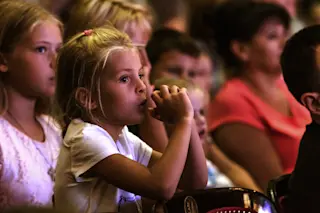While supporters have long lauded theater for its intangible benefits, a 2021 study published in the Journal of Experimental Social Psychology recently captured theater’s power to increase empathy.
The study — in collaboration with Artists Repertory Theater in Portland, Oregon and The Public Theater in New York — examined the effects of three different plays through a synthesis of surveys conducted before and after participants witnessed the plays.
Data revealed that live theater experiences increased audience members' empathy for the people and groups portrayed. Exposure to the plays also altered opinions about social-political issues portrayed and led to increases in charitable donations. The increase in empathy correlated with how transported the audience members felt.
Katie Lear, a child mental health counselor and registered drama therapist, says theater’s immersive ability to activate more of the body’s senses makes theater a particularly effective method for teaching children empathy.
“For all of us, ...














